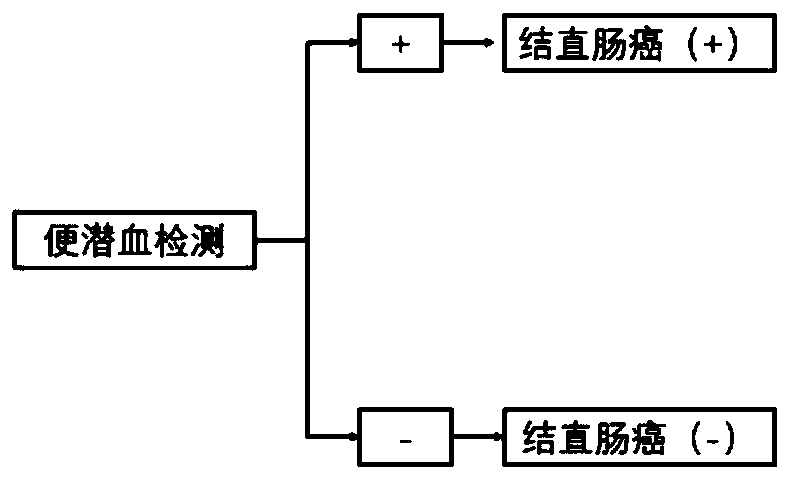Kit for detecting colorectal cancer indicator bacteria
A technology for colorectal cancer and indicator bacteria, which is applied in the field of kits for the detection of colorectal cancer indicator bacteria, can solve the problems of poor sensitivity, cumbersome pre-preparation, and difficulty in detecting colorectal cancer mutation signals, and achieve the effect of high sensitivity
- Summary
- Abstract
- Description
- Claims
- Application Information
AI Technical Summary
Problems solved by technology
Method used
Image
Examples
Embodiment 1
[0087] Example 1: SVM algorithm combined with indicator bacteria primer combination and fecal occult blood FIT index combination has higher detection accuracy than fecal occult blood FIT
[0088] 1 Detection of the abundance of 9 intestinal bacteria in feces and the results of fecal occult blood
[0089] 1.1 Sample source
[0090] A total of 1086 fecal samples from patients with colorectal cancer in the Anorectal Department of Liaoning Cancer Hospital and those who were healthy by colonoscopy were collected through cooperation.
[0091] 1.2 Specimen extraction
[0092] Use the feces collection box, tear off the adhesive, put it in a plastic bag; paste the box on the toilet, and excrete the feces into the feces collection box; take a sample (about 5 spoons of feces) into the feces storage tube with a sampling spoon, and then tighten the tube firmly Cover; put the feces preservation tube into the self-sealing tape, and store it at -80°C for later use.
[0093] The bacterial g...
Embodiment 2
[0150] Embodiment 2: Support vector machine method detection model parameter optimization
[0151] 1. Treat the feces
[0152] The specific experimental steps in this example are the same as those in Example 1. The feces of healthy people and patients with colorectal cancer were collected, the bacterial genome was extracted, PCR was performed with 16s rRNA primers, and the values were recorded by the calculation method of the threshold line (Ct) of the amplification curve. Also perform fecal occult blood testing.
[0153] 2. Standardize the results of manure disposal
[0154] The specific result processing in this embodiment is the same as the steps in Embodiment 1. Standardized input reference set data file format, the first column is the sample number, the second to eighth columns are indicator bacteria 1, indicator bacteria 2, indicator bacteria 3, indicator bacteria 4, indicator bacteria 5, indicator bacteria 6, indicator bacteria 7 The ΔCt value, the ninth column is...
Embodiment 3
[0174] Embodiment 3: support vector machine method detects strain combination preferred 1
[0175] 1. Treat the feces
[0176] The specific experimental steps in this example are slightly different from those in Example 1. In this embodiment, 9 combinations of indicator bacteria were detected, and the performance of the 9 combinations of indicator bacteria and the 7 preferred indicator bacteria described in the present invention in identifying colorectal cancer were compared. The rest of the experimental steps are the same as in Example 1.
[0177] The feces of healthy people and colorectal cancer patients were collected in combination, the bacterial genome was extracted, PCR was performed with 16s rRNA primers, and the values were recorded by the calculation method of the threshold line (Ct) of the amplification curve. Also perform fecal occult blood testing.
[0178] The primer sequences of 9 indicator bacteria are as follows:
[0179] Table 10
[0180]
[0181] ...
PUM
| Property | Measurement | Unit |
|---|---|---|
| Sensitivity | aaaaa | aaaaa |
Abstract
Description
Claims
Application Information
 Login to View More
Login to View More - R&D
- Intellectual Property
- Life Sciences
- Materials
- Tech Scout
- Unparalleled Data Quality
- Higher Quality Content
- 60% Fewer Hallucinations
Browse by: Latest US Patents, China's latest patents, Technical Efficacy Thesaurus, Application Domain, Technology Topic, Popular Technical Reports.
© 2025 PatSnap. All rights reserved.Legal|Privacy policy|Modern Slavery Act Transparency Statement|Sitemap|About US| Contact US: help@patsnap.com



